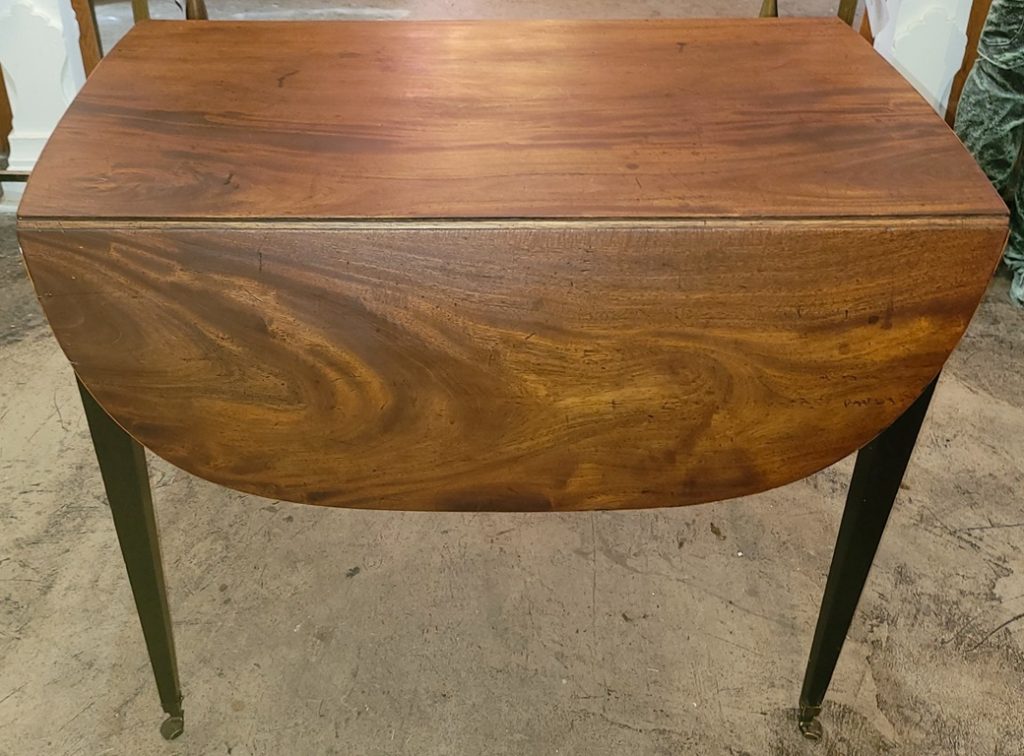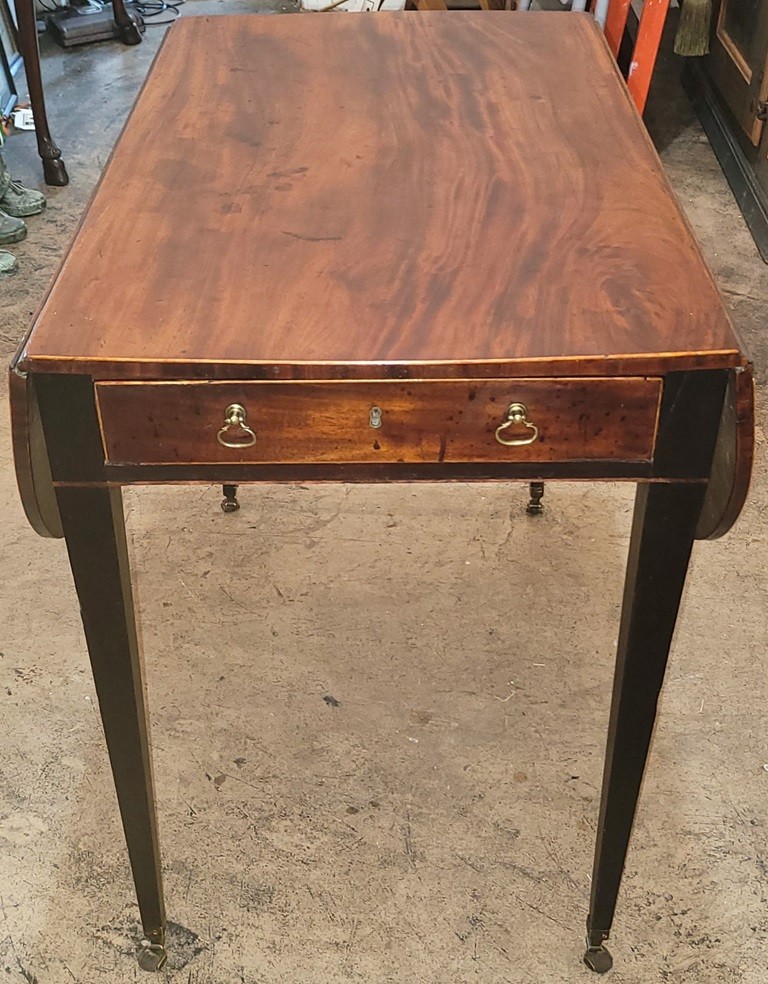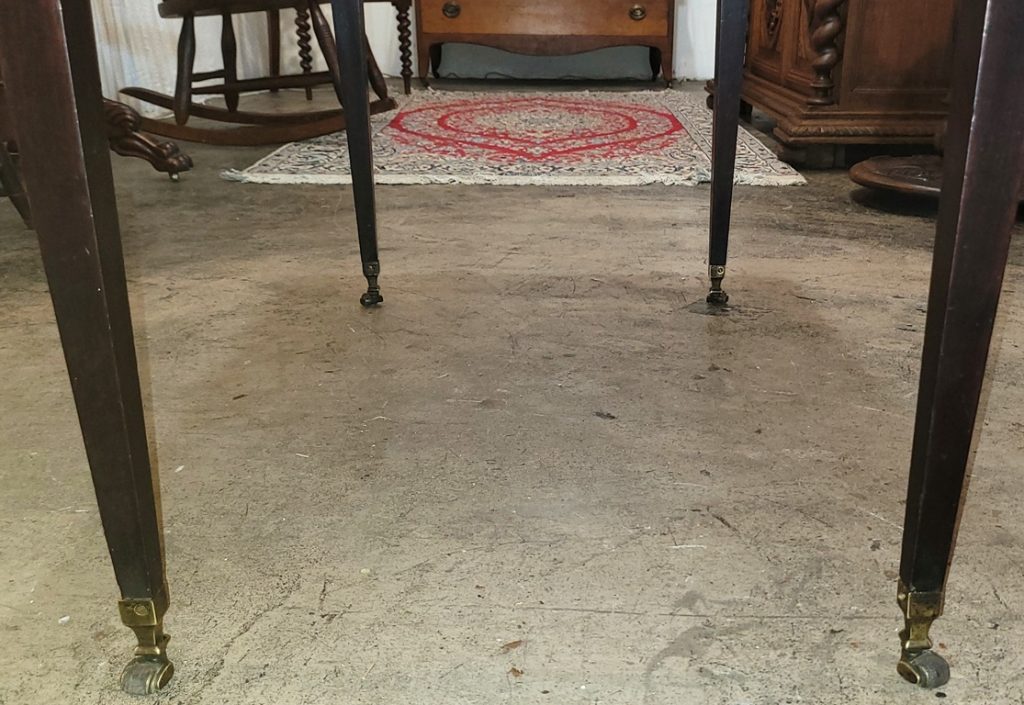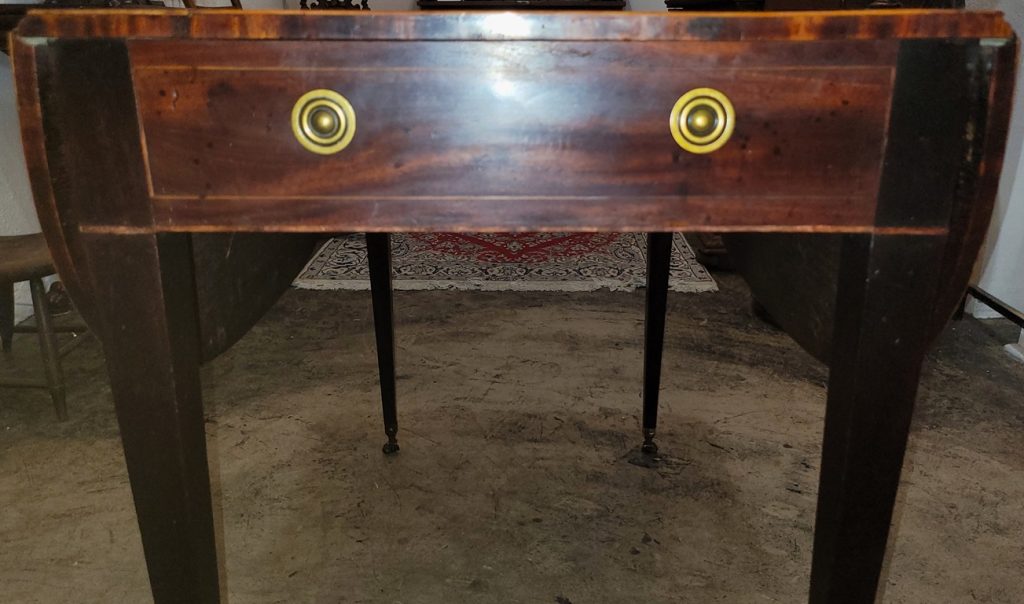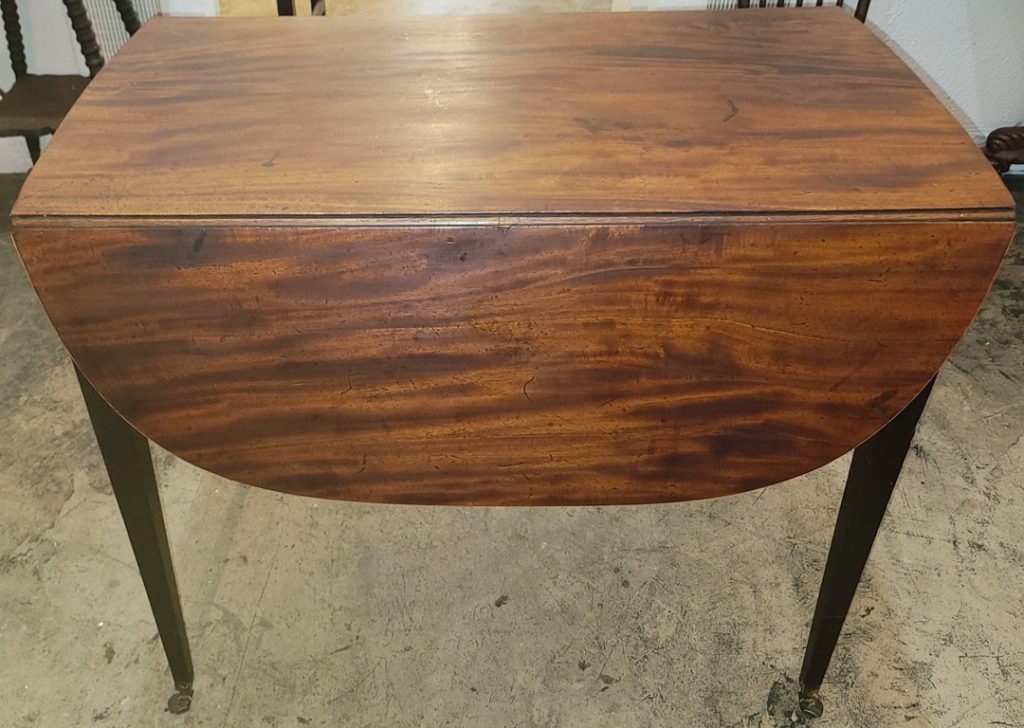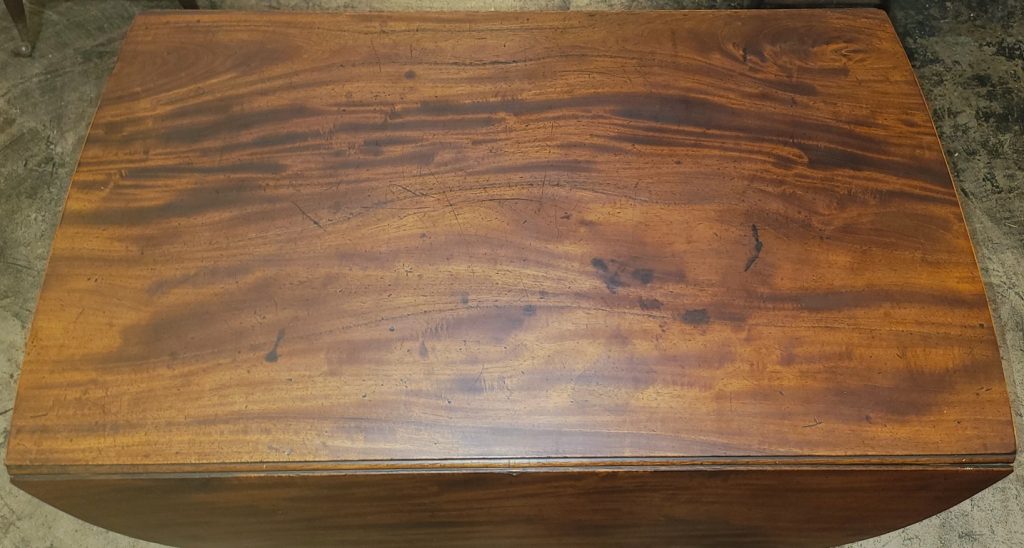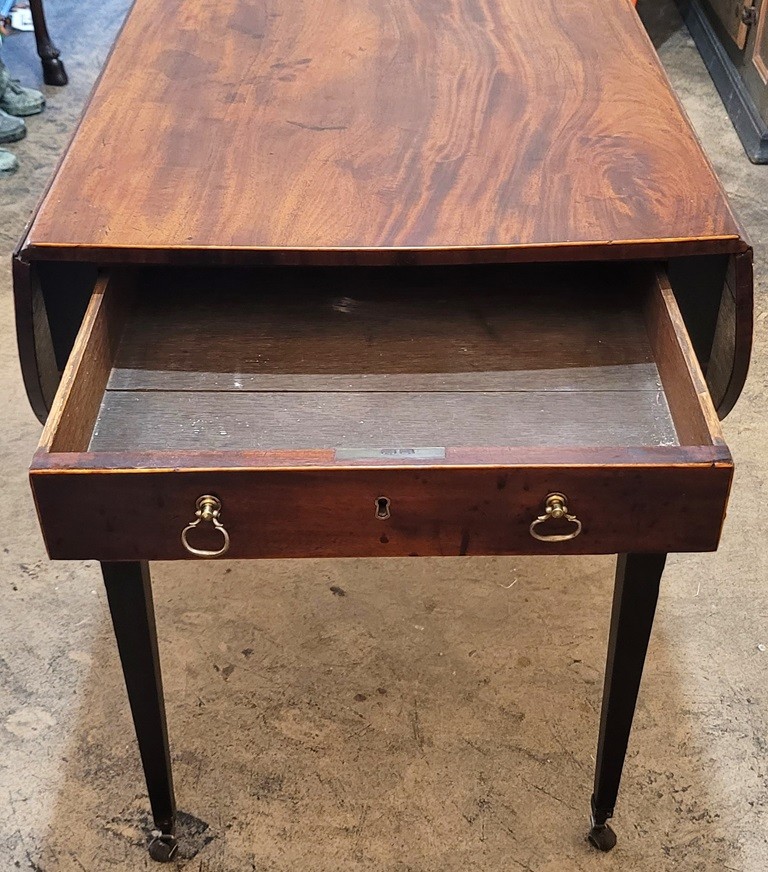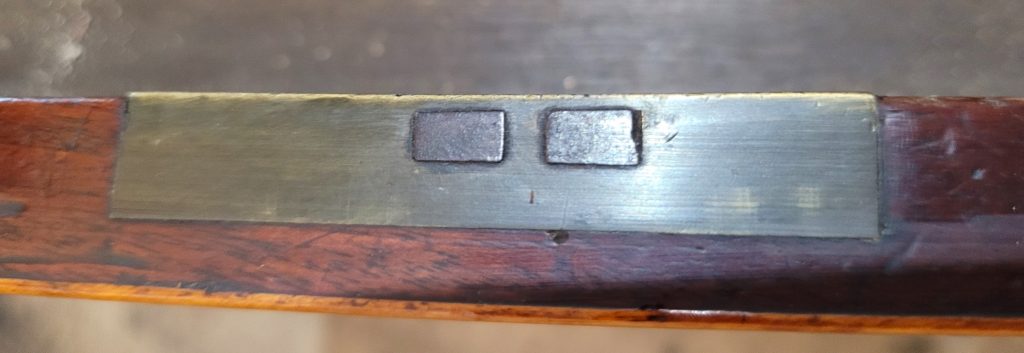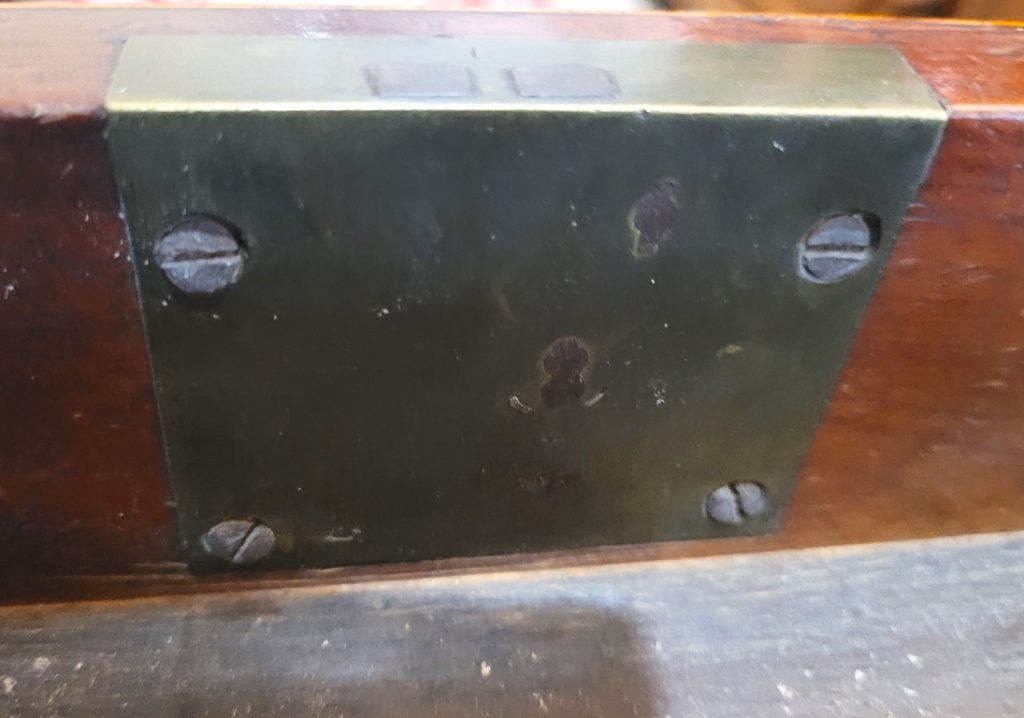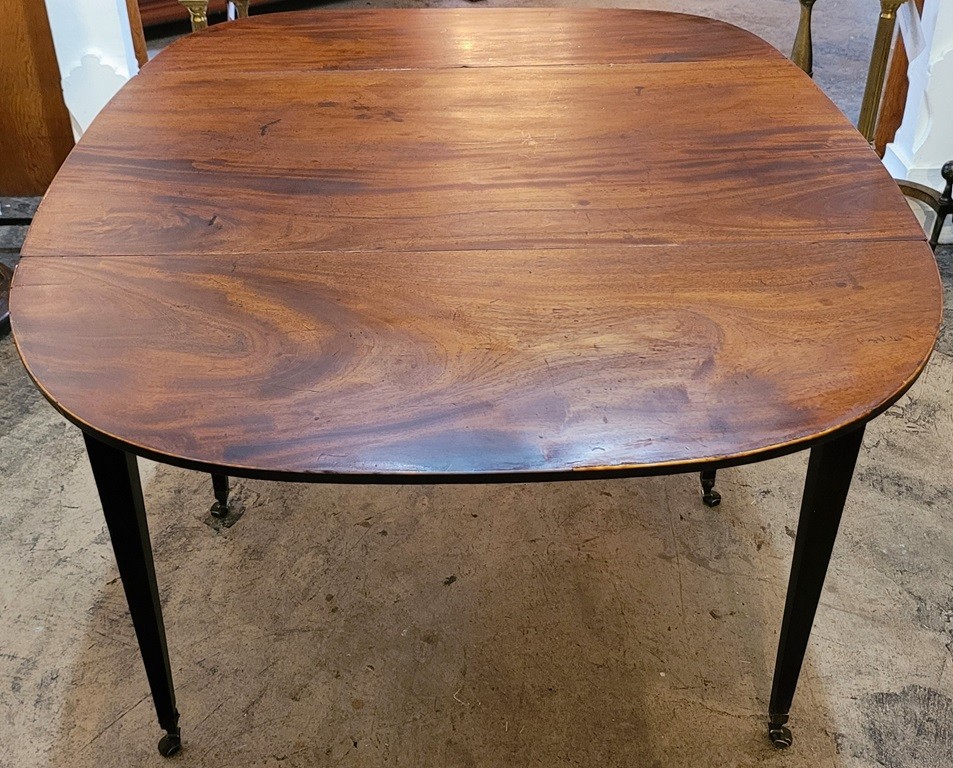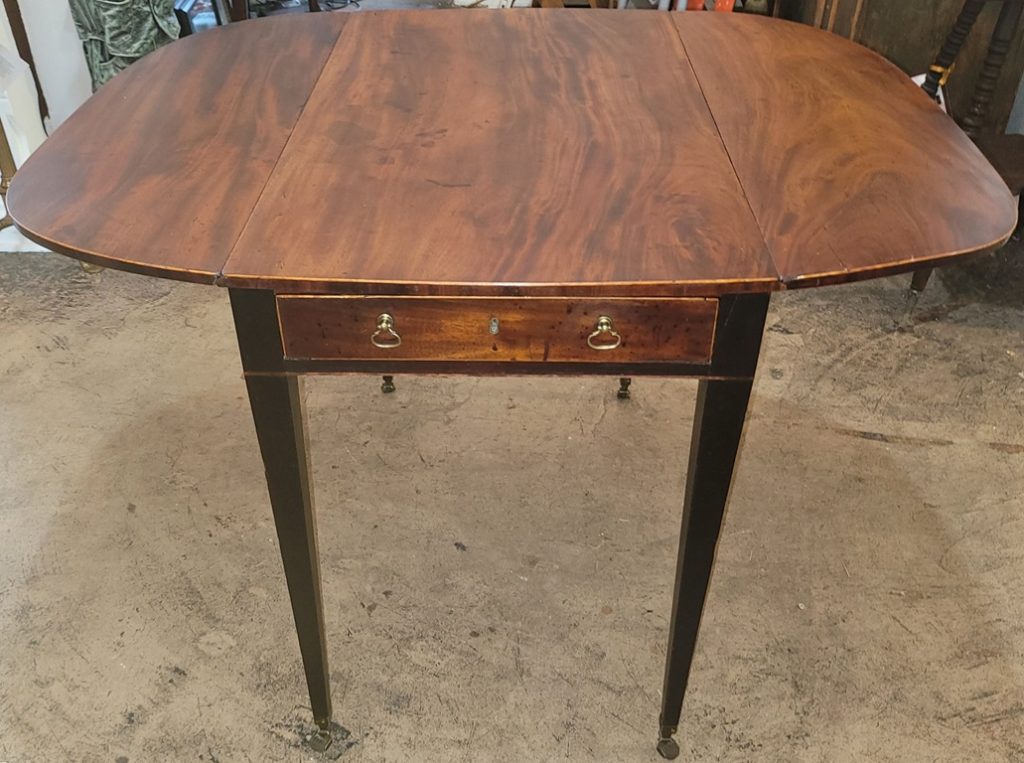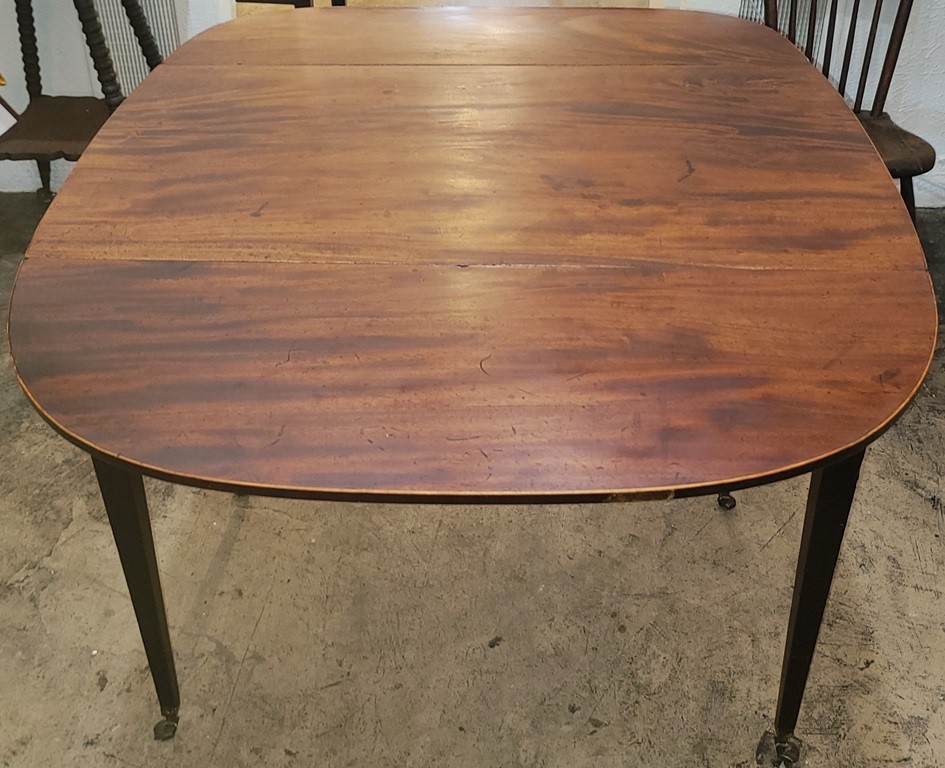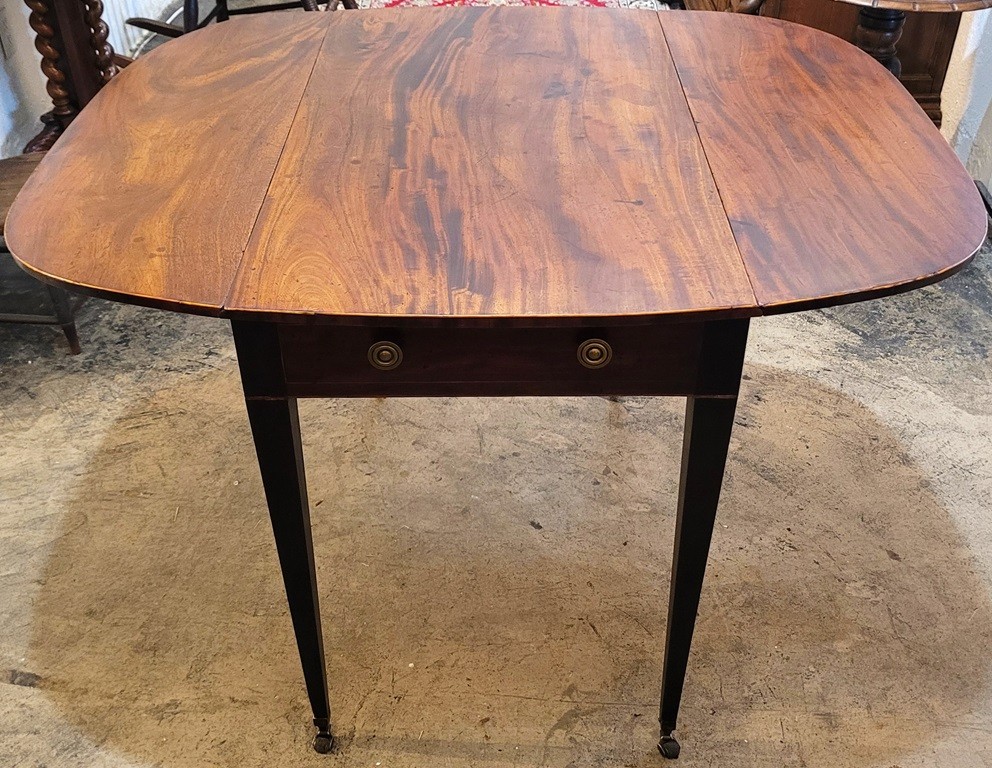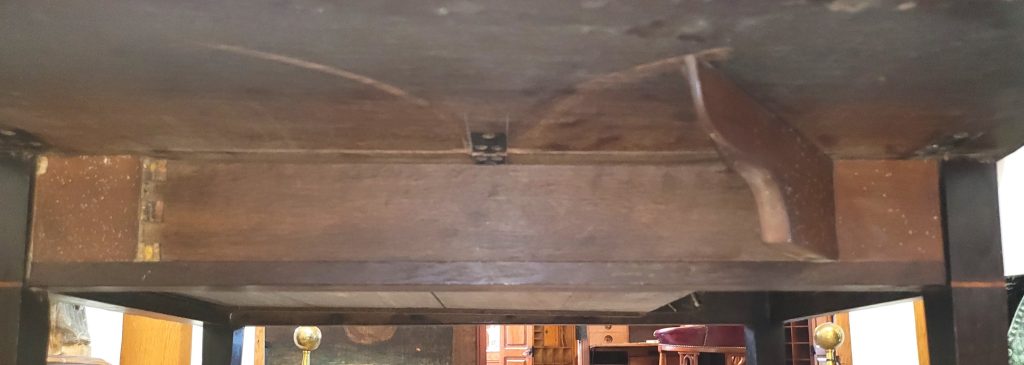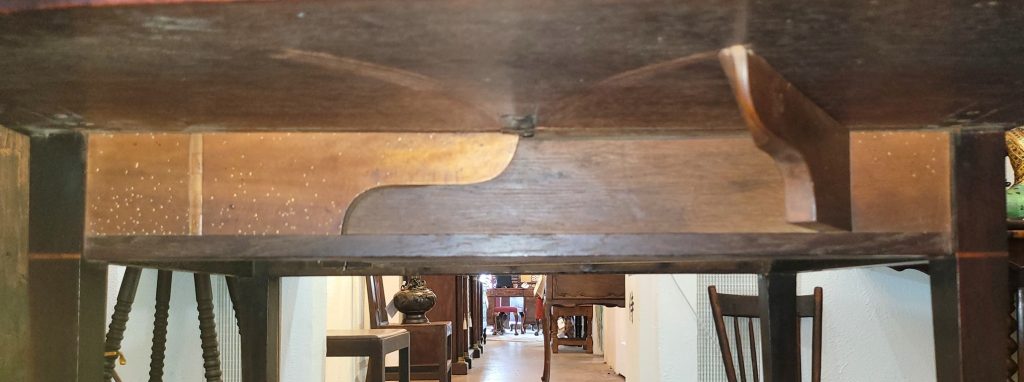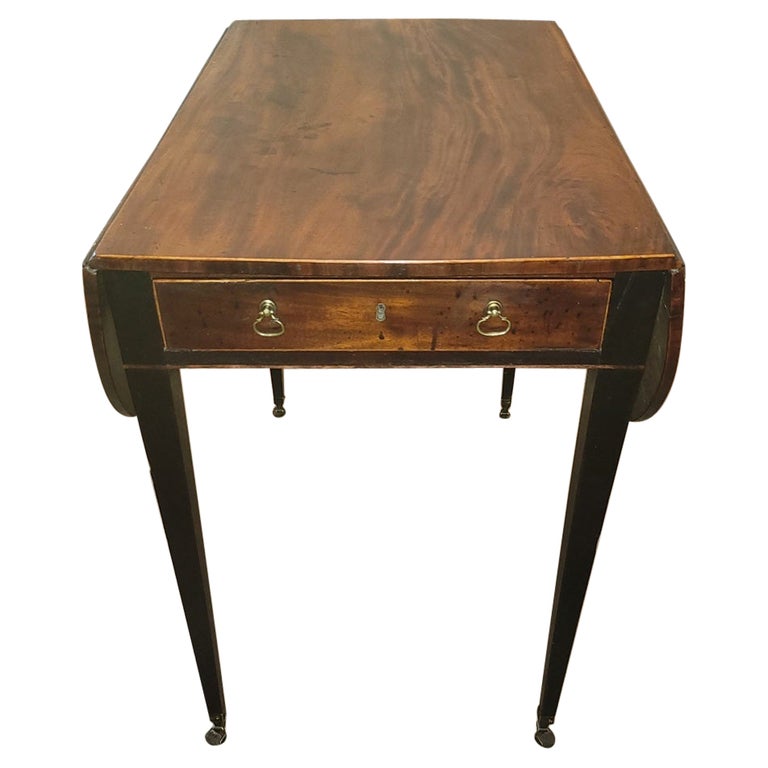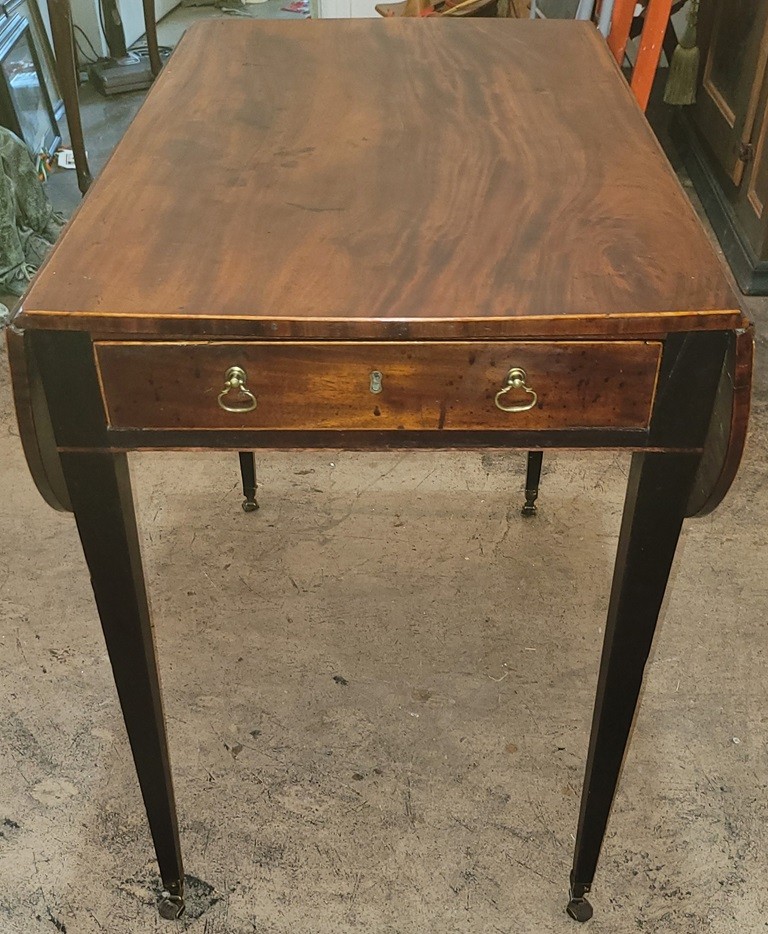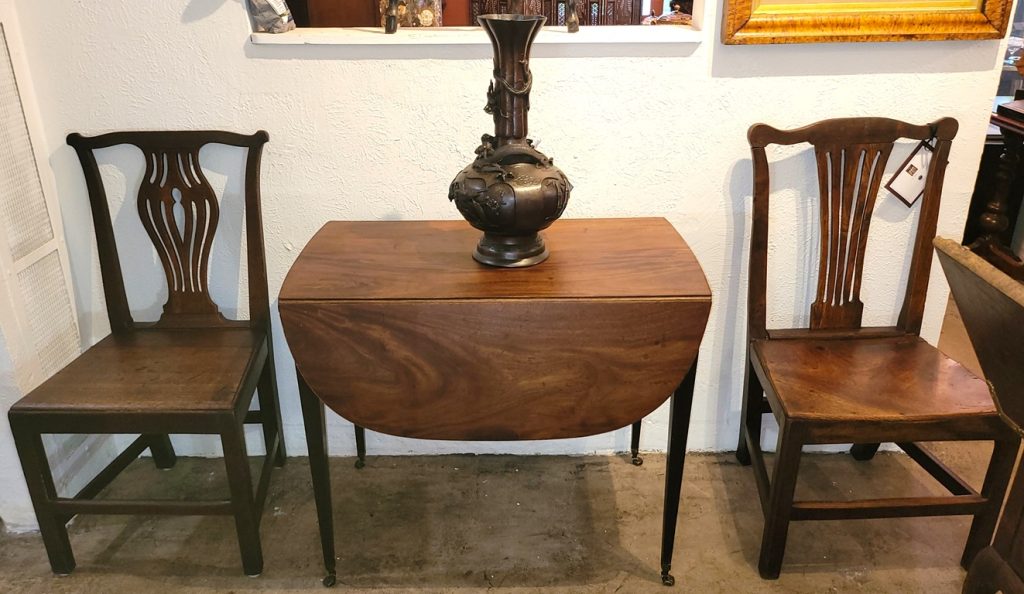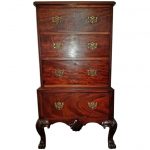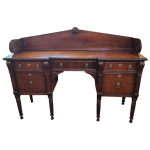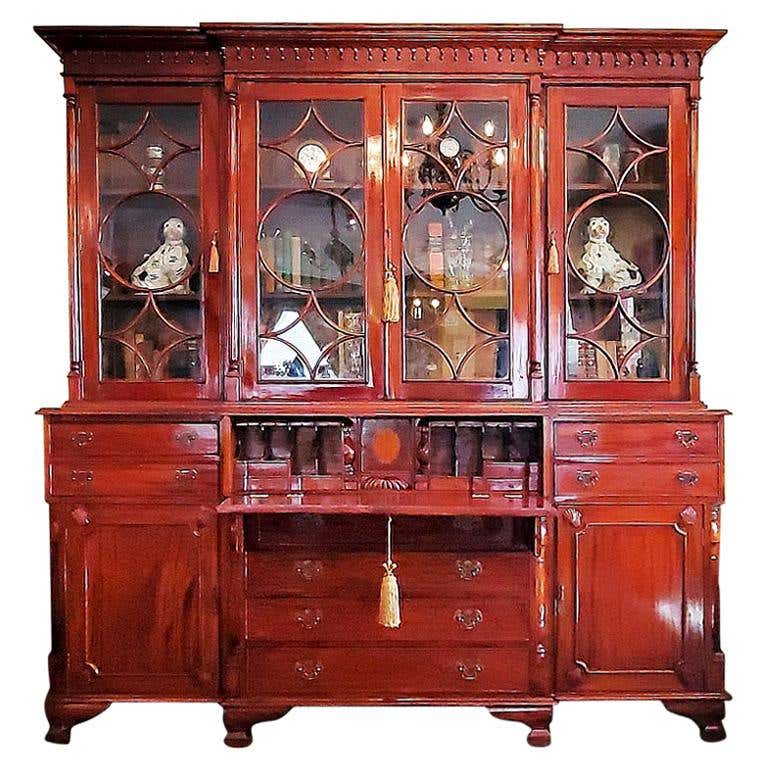18C Irish Georgian Mahogany Pembroke Table
PRESENTING a GORGEOUS and early example of an 18C Irish Georgian Mahogany Pembroke Table.
GORGEOUS SIMPLICITY in this Mid-18th Century,
George II Period, circa 1760-80, mahogany ‘Pembroke Table’.
Flamed mahogany, with fold down side leaves.
The secondary woods, appear to be a combination of sycamore and ash (consistent with it being ‘Irish’ made).
The central drawer has boxwood and burl ash stringing and the pair of brass pulls on the working section of the drawer appear to be the originals. Like all ‘Pembroke Tables’, it has a false drawer, on the other end.
Boxwood stringing to the edges of table top and Burlwood stringing to the base..
The base and legs (excluding the drawer section) are slightly ebonized, giving a 3 tone effect to the base and drawer view.
Lovely tapering legs ending with original brass castors. These are padded, fixed castors and do not rotate.
Has it’s original lock, but no key.
This piece was most likely, a ‘provincial Irish piece’, it is not overly inlaid or highly decorated ….. it is simple … in construction and design …. BUT …. beautiful in its simplicity!
It was acquired in Ireland.
It has a lovely natural patina, consistent with its age and it is QUITE RARE, because:- (1) it is an ‘Irish’ Georgian piece and (2) it is an ‘early example’ of a Pembroke table, as most you will see, are from 1790 onwards!
RARE AND WITH ‘LOADS’ OF CHARACTER!
Pembroke table, light, drop-leaf table designed for occasional use, probably deriving its name from Henry Herbert, 9th Earl of Pembroke (1693–1751), a noted connoisseur and amateur architect. The table has two drawers and flaps on either side that can be raised by brackets on hinges (known as “elbows”) to increase its size. Usually provided with casters (it was often used for bedside meals), the legs of the common English versions, as illustrated by Thomas Sheraton and others, are supported or reinforced by X-shaped stretchers.
In the United States a distinctive type of support, shaped like a lyre, became popular toward the end of the century. It is also known as a flap and elbow table.
Link: http://www.britannica.com/topic/Pembroke-table
PROVINCIAL FURNITURE: ‘Provincial” furniture is the term used to describe pieces of furniture that were made in the more rural and rustic parts of the Country involved. Generally speaking, provincial pieces tend to be made from easily accessible local woods such as oak, ash and maple. Designs tended to be simpler in form than pieces made in the major cities. The major cities had greater access to more exotic imported woods and designs tended to be more more intricate and inspired by the prevailing global trends. Wealth also had a large part to play in most provincial pieces. Clearly, the wealthy people of the 17th, 18th and 19th Centuries wanted ONLY THE BEST AVAILABLE, and would buy their furniture from high-end city retailers or manufacturers and often had then specifically made for them on commission. Ordinary folk could not afford this but would instead rely upon local cabinet makers for their furniture needs.
18C Irish Georgian Mahogany Pembroke Table
Provenance: Bought at Auction in Ireland.
Dimensions: 28.25 inches Tall, 34 inches Long, 20.5 inches Wide with leaves down,
28.25 inches Tall, 34 inches Long, 43 inches wide with leaves up/extended
Condition: Some slight warping to the side leaves with age. Some minor professional repairs to the inlaid stringing, but otherwise, in original condition and good for it’s age. The 2 brass knobs, on the false end of the drawer, are later replacements, but of the correct style/period. Missing one swinging support lever underneath, on one side only, but still very stable with only 1 support lever. No key.
SALE PRICE NOW: $3,600
